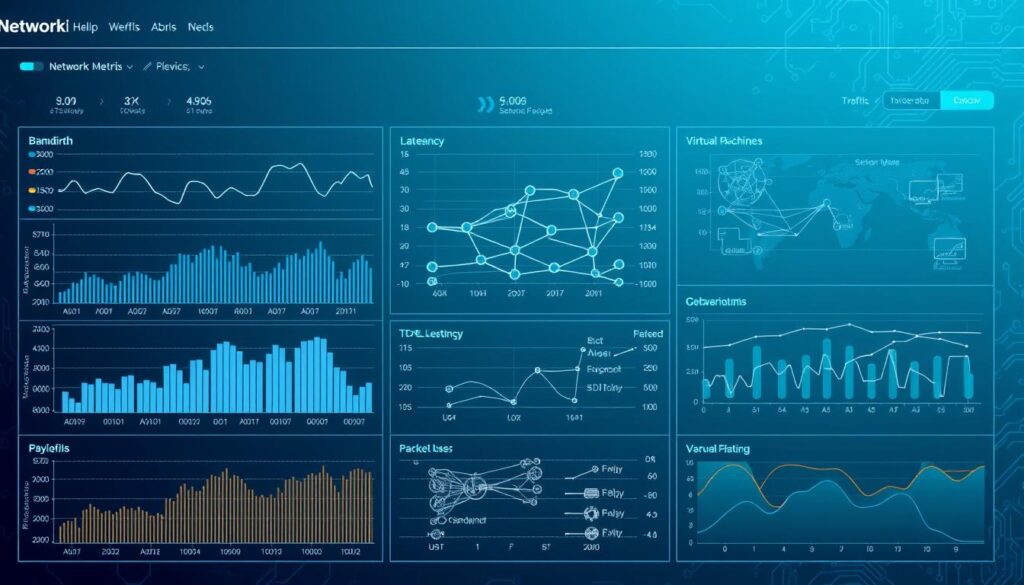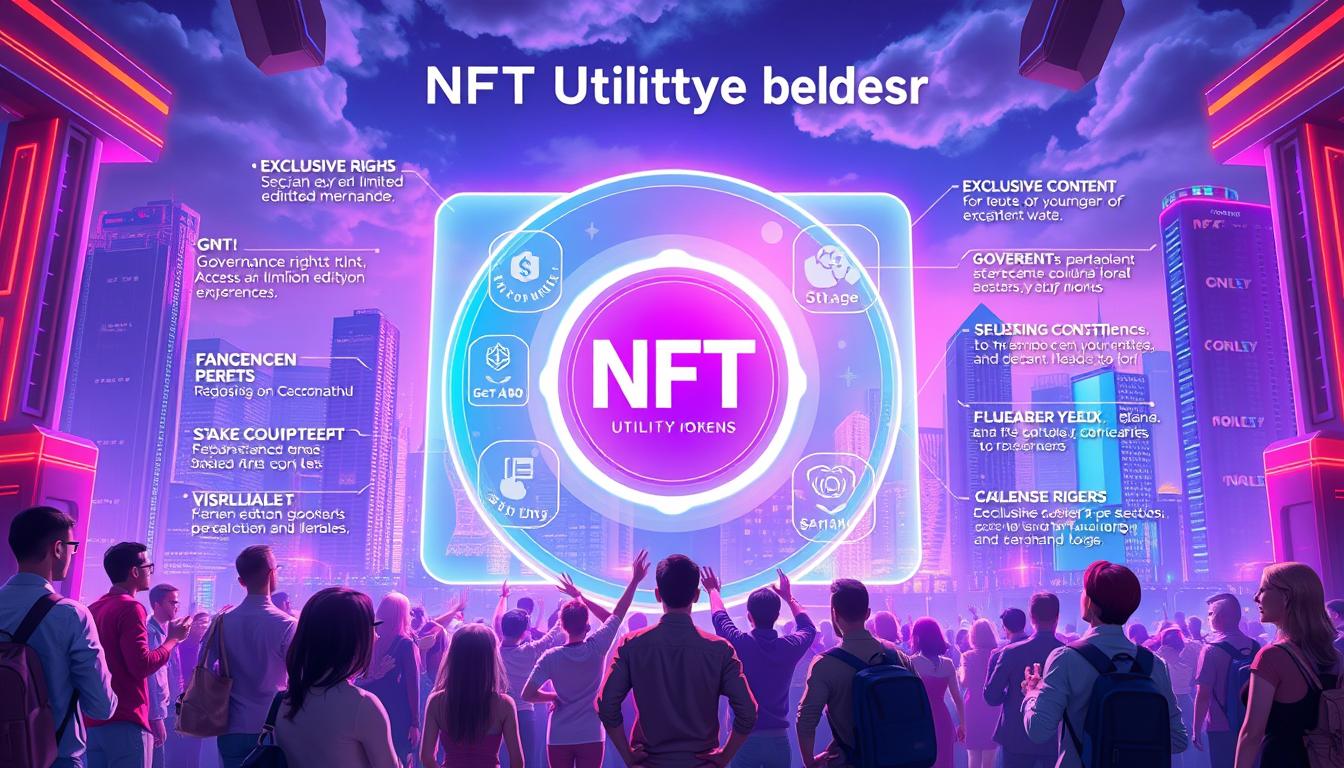Now Reading: Understanding Private blockchain enterprise permissioned network Solutions
- 01
Understanding Private blockchain enterprise permissioned network Solutions
Understanding Private blockchain enterprise permissioned network Solutions

Modern businesses face growing challenges in data management and operational efficiency. Distributed ledger technology offers innovative approaches to these challenges. Companies now have powerful options for securing their digital operations.
These specialized systems provide controlled access to verified participants. This approach maintains confidentiality while enabling collaboration. Organizations can manage who enters their digital ecosystem and what actions they perform.
The technology combines the best features of different ledger architectures. It offers the transparency of public systems with the control of restricted environments. This creates a balanced solution for modern business needs.
Major corporations across various industries now implement these systems. They streamline complex processes and reduce intermediary costs. The result is enhanced data integrity across departments and partner organizations.
This guide explores how these solutions address critical business requirements. We’ll examine participant identification, regulatory compliance, and process automation. Real-world implementations demonstrate practical value in supply chain and financial services.
Key Takeaways
- Controlled access systems allow verified participants while maintaining data confidentiality
- These solutions combine transparency with organizational control over digital operations
- Businesses can streamline complex processes and reduce intermediary costs
- Enhanced data integrity benefits multiple departments and partner organizations
- Real-world applications span supply chain management and financial services
- The technology supports regulatory compliance and participant identification needs
- Organizations can automate complex multi-party processes efficiently
Introduction to Enterprise Blockchain Networks
Contemporary organizations require sophisticated technological infrastructures to manage complex information flows. Distributed ledger systems offer transformative approaches to these operational demands.
Purpose and Scope of the Ultimate Guide
This comprehensive resource provides business leaders with essential knowledge about specialized distributed systems. It covers technical foundations and strategic implementation approaches.
The guide explores various architectural types and their operational benefits. Real-world applications across multiple sectors demonstrate practical value.
Overview of Blockchain Terminology
Understanding key concepts is crucial for effective decision-making. Distributed ledgers form the foundation of these innovative systems.
Consensus mechanisms ensure agreement among participants. Cryptographic security protects sensitive business information throughout transactions.
Smart contracts automate complex multi-party processes efficiently. These digital agreements execute automatically when predefined conditions are met.
| Concept | Definition | Business Application |
|---|---|---|
| Distributed Ledger | Shared database across multiple locations | Real-time data synchronization |
| Consensus Mechanism | Protocol for network agreement | Trust establishment among partners |
| Immutability | Permanent record characteristics | Audit trail maintenance |
| Smart Contracts | Self-executing digital agreements | Process automation |
This terminology foundation prepares readers for detailed technical discussions in subsequent sections. Clear understanding enables better vendor evaluation and implementation planning.
Blockchain Fundamentals: Private, Public, and Permissioned Networks
Digital ledger architectures vary significantly in how they manage user entry and governance protocols. Choosing the right type depends heavily on an organization’s needs for control, transparency, and speed.
This comparison highlights the core operational differences between the main models.
Differences in Control and Access
Control structures define who has authority over the ledger. In one model, a single organization holds full control. This allows for quick decisions and data adjustments.
Another model operates with no central authority. All participants share control equally. This creates a system where no single party can change the rules.
A hybrid model offers a middle path. A governing body controls access and permissions. However, the data itself may be visible to all verified participants.
Access mechanisms are equally important. Some systems are completely open for anyone to join. Others require strict identity checks before granting entry.
Understanding Decentralization and Centralization
Decentralization spreads power across many participants. This increases trust but can reduce transaction speed. It is a core feature of open, public systems.
Centralization concentrates power for efficiency. This is common in systems designed for specific business consortia. It allows for faster processing and greater privacy.
The hybrid model provides flexibility. Members can choose their preferred level of decentralization. This balances control with the benefits of distributed trust.
| Network Type | Control Model | Access Level | Best For |
|---|---|---|---|
| Private | Centralized | Restricted | Internal processes, full privacy |
| Public | Decentralized | Open | Transparency, censorship resistance |
| Permissioned | Flexible | Verified | Business consortia, regulated industries |
Deep Dive into Private Blockchains
Unlike their open counterparts, restricted digital ledgers maintain strict boundaries around who can interact with the system. These specialized environments provide organizations with granular control over data access and modification rights.
Control, Privacy, and Security
Operators validate all participating parties before granting system entry. This verification process ensures only authorized individuals can read, write, or edit records.
Multiple access layers keep sensitive information confidential within the system perimeter. Data remains operator-owned and unavailable to external parties without explicit authorization.
Security benefits from this controlled participation model. Validating each user’s identity significantly reduces vulnerability to anonymous malicious actors. These systems represent a significant advancement in privacy-enhancing technology for business applications.
Operational Advantages for Enterprises
These specialized systems create unified platforms for secure information sharing. They eliminate bottlenecks associated with traditional record-keeping methods.
Streamlined transaction processing enables faster reconciliation across departments. Organizations gain more agile responses to market changes through efficient data flow.
The controlled environment supports custom identity management solutions. These integrate seamlessly with existing corporate authentication systems while maintaining security protocols.
Companies retain flexibility to modify records when necessary for compliance or error correction. This provides operational adaptability that immutable public systems cannot offer.
Understanding Permissioned Blockchains for Enterprises
Business consortia require specialized ledger architectures that balance transparency with access restrictions. These systems provide controlled environments where verified participants collaborate securely.
Identity Verification and Role-Based Access
Sophisticated authentication systems ensure all users are known and accountable. Digital certificates verify each participant before granting system entry.
Role-based controls assign specific permissions according to organizational needs. Administrators define what information each user can view and modify.
This granular structure maintains strict data security. Companies control operational capabilities based on job functions and security clearances.

Consensus Mechanisms and Flexibility
Validation protocols differ significantly from public systems. Organizations choose mechanisms that match their operational requirements.
Practical Byzantine Fault Tolerance ensures safety despite unreliable parties. Federated consensus uses trusted validators for efficient agreement.
Round-robin selection distributes validation responsibilities fairly. Cooling-off periods maintain network performance across all nodes.
These systems offer architectural flexibility for specific business needs. Members determine the ideal balance between control and distributed trust.
Private blockchain enterprise permissioned network: Applications and Benefits
Corporate digital infrastructures gain remarkable advantages from specialized distributed systems. These solutions deliver powerful improvements in data reliability and processing velocity.
Advantages in Data Integrity and Speed
Once recorded, information becomes permanent on the ledger. This immutability creates tamper-proof historical records for all business activities.
The system preserves every transaction in chronological order. This establishes strong traceability for enterprise data management.
Smaller participant groups enable faster information validation. Known operators interconnected through efficient pathways reduce transmission delays significantly.
These systems achieve real-time settlement for business transactions. Reconciliation times drop from weeks to minutes depending on configuration.
Key operational benefits include:
- Unalterable audit trails supporting compliance requirements
- Rapid processing speeds through optimized network architecture
- Elimination of manual verification across departments
- Single source of truth for all authorized participants
The combination of data integrity and processing speed creates substantial efficiency gains. Organizations streamline processes and respond more agilely to market demands.
Comparing Network Performance and Analytics Capabilities
Performance metrics reveal significant differences between various distributed ledger configurations. These distinctions impact operational efficiency and decision-making processes.
Organizations must understand how system architecture affects data flow and insight generation.
Network Latency and Throughput Considerations
Restricted systems demonstrate superior speed characteristics due to their controlled participant base. Known operators interconnected through efficient pathways reduce transmission delays significantly.
Smaller participant groups enable faster information validation. This creates substantial efficiency gains for business operations.

Public architectures face inherent limitations from their unlimited participant base. Information travels across thousands of geographically distributed nodes.
Verified identity systems mirror these performance advantages. Data transmits over shorter distances at accelerated rates.
Real-Time Analytics and Data Aggregation
Analytical tools generate graphical visualizations of transaction trends and patterns. Companies receive immediate alerts on activities requiring attention.
Data collection occurs more rapidly in controlled environments. The ability to identify every node enables faster aggregation.
Businesses leverage these insights to track behaviors and forecast trends. Actionable intelligence informs strategic decisions and operational optimizations.
Advanced implementations combine different data sources. Machine learning algorithms generate comprehensive insights for organizational use.
Regulations, Compliance, and Security in Blockchain Networks
Navigating the regulatory landscape presents significant challenges for distributed ledger implementations. Organizations must balance innovation with strict adherence to legal requirements. This section examines how specialized systems address these critical concerns.
Adapting to Evolving Regulatory Frameworks
Legal requirements continue to develop across jurisdictions. Systems with controlled access demonstrate superior adaptability to these changes. They align more easily with existing business structures and policies.
Rule modifications can occur rapidly when needed for compliance. This flexibility ensures organizations remain current with latest standards. The approach minimizes disruption to ongoing operations.
Public architectures face greater hurdles with privacy mandates. Their open nature conflicts with certain data protection regulations. This creates compliance complications for business applications.
Implementing Security Protocols and Identity Management
Robust security measures protect sensitive information throughout transactions. Encryption standards and access controls form the foundation. Monitoring systems detect and prevent unauthorized activities.
Identity verification mechanisms satisfy regulatory requirements like KYC and AML. They ensure all participants are properly authenticated. Comprehensive audit trails provide tamper-proof evidence for regulators.
Privacy-preserving technologies balance transparency with confidentiality. Authorized users access necessary information while sensitive data remains protected. This dual approach meets both business and regulatory needs.
| System Type | Regulatory Adaptability | Compliance Change Speed | Identity Management |
|---|---|---|---|
| Public Ledgers | Limited by open access | Slow, requires consensus | Anonymous participants |
| Controlled Access Systems | High alignment with policies | Rapid implementation | Verified identity required |
| Hybrid Approaches | Balanced flexibility | Moderate to fast | Role-based permissions |
These security and compliance features make controlled systems ideal for regulated industries. Financial services, healthcare, and supply chain applications benefit particularly. Organizations gain confidence in meeting their legal obligations while leveraging innovative technology.
Smart Contracts and Automation in Enterprise Blockchains
Automated contract execution eliminates manual intervention in complex multi-party workflows. These digital agreements represent a transformative approach to business operations.
Smart contracts function as self-executing programs with terms directly encoded. They automatically trigger actions when predetermined conditions are met.

Streamlining Business Processes via Automation
Routine operations become significantly more efficient through automated execution. Payment processing, compliance checks, and inventory management benefit greatly.
Employees can focus on strategic activities rather than administrative tasks. This redistribution of effort enhances overall organizational productivity.
Key automation advantages include:
- Reduced processing time for routine operations
- Minimized transaction costs through intermediary elimination
- Enhanced accuracy in multi-party workflows
- Consistent compliance with predefined rules
Enhancing Transaction Efficiency with Smart Contracts
Transaction validation occurs automatically without human intervention. Settlement times reduce from days to minutes through streamlined execution.
The precision of coded logic ensures strict adherence to agreement terms. This reduces compliance risks and potential disputes significantly.
Cost savings extend across auditing, reporting, and verification activities. Organizations achieve substantial operational efficiency improvements.
Use Cases: Enhancing Supply Chain and Identity Management
Real-world implementations powerfully demonstrate the practical value of specialized ledger systems. These cases show how organizations solve complex problems.
They achieve new levels of efficiency and security. The following examples highlight transformative applications.
Improving Supply Chain Transparency and Efficiency
Walmart Canada’s partnership with over 70 carriers faced tracking challenges. Manual processes took days to trace food items.
Their new system, IBM Food Trust, changed everything. It now tracks goods from farm to store in seconds.
This speed is crucial for food safety. Other companies see similar benefits.
De Beers tracks diamonds to ensure ethical sourcing. Honeywell provides accurate histories for aerospace parts.
These applications create unparalleled visibility. Data integrity is maintained across every handoff.
Secure Identity Management for Compliance
Identity verification is another critical area. The NationWide RiskStream Consortium connects 30 insurers.
It allows real-time proof of insurance. Customers can resolve disputes directly and quickly.
Governments are also adopting this technology. Thailand uses a digital ID for border control.
Citizens can store licenses and passports securely. This streamlines validation and enhances compliance.
These identity management cases show robust solutions. They protect information while improving user experience.
Integrating Blockchain Solutions into Business Operations
Successfully weaving distributed ledger technology into a company’s core activities demands a clear strategy focused on specific operational gains. This integration connects technical capabilities directly with organizational objectives.
It addresses particular pain points within existing workflows. The goal is to deliver measurable improvements in efficiency and data reliability.

Cost Reduction and Process Efficiency
Adopting these specialized systems leads to significant financial benefits. Automation cuts down on manual labor for data entry and verification.
Companies also see lower expenses for auditing and compliance reporting. Streamlined transaction processing reduces intermediary fees.
Process efficiency improves dramatically. Unified information-sharing platforms eliminate bottlenecks from traditional siloed databases.
This enables faster processing and quicker reconciliation across departments. Organizations gain a more agile response to market changes.
Real-World Enterprise Adoption Stories
General Electric offers a powerful example of large-scale implementation. The conglomerate faced complex accounting challenges across many legacy systems.
Their international units had difficulty reconciling financial statements. This led to invoice disputes and manual resolution delays.
GE implemented a specialized ledger for intercompany accounting. It created a single, immutable source of truth for all transactions.
The system interfaces seamlessly with existing ERP and financial software. Smart contracts automate cash flow rules and other business logic.
Key improvements from this integration include:
- More reliable accounting practices and reduced issues
- Enhanced transparency and simplified audit processes
- Significant automation of routine multi-party tasks
This case shows how strategic integration delivers a strong return on investment. It provides a competitive edge through enhanced control and efficiency.
Future Trends in Blockchain Enterprise Solutions
Forward-thinking companies are preparing for the next wave of digital transformation through innovative ledger technologies. These systems continue to evolve with exciting new capabilities.
The integration of artificial intelligence with distributed ledgers creates powerful analytical tools. Machine learning algorithms can process transaction data to identify patterns and predict outcomes.
Emerging Technologies and Market Innovations
Internet of Things devices now connect directly to distributed systems. This allows real-time recording of sensor data on immutable ledgers.
Quantum-resistant cryptography ensures long-term security for sensitive information. These advanced encryption methods protect against future computational threats.
Market innovations expand beyond traditional use cases. Digital voting systems leverage transparency while maintaining voter privacy.
Predicted Shifts in Blockchain Adoption
Organizations are moving from pilot programs to full-scale implementations. This shift transforms core operations and creates competitive advantages.
Hybrid architectures combine internal control with external transparency. Companies use different ledger types for various business needs.
Industry-specific solutions offer tailored features for particular sectors. Healthcare systems focus on privacy-preserving data sharing.
| Trend Category | Key Development | Business Impact |
|---|---|---|
| Technology Integration | AI and IoT convergence | Enhanced analytics and automation |
| Architectural Evolution | Hybrid system adoption | Balanced control and transparency |
| Sector Specialization | Industry-specific features | Tailored operational solutions |
| Sustainability Focus | Energy-efficient mechanisms | Reduced environmental impact |
These developments signal a maturing technology landscape. Organizations can expect more reliable and efficient distributed systems.
Conclusion
The evolution of distributed ledger systems has reached a pivotal moment for corporate adoption. These specialized platforms deliver tangible business value through enhanced efficiency and data integrity.
Organizations now have proven frameworks for balancing transparency with necessary controls. The technology supports complex workflows while maintaining compliance requirements.
Real-world implementations demonstrate measurable returns across various industries. Companies achieve cost reductions through automation and streamlined processes.
Smart contracts eliminate intermediaries and reduce human error. This ensures consistent execution of predefined business rules.
As these systems mature, they integrate with emerging technologies like AI and IoT. This creates even greater potential for innovation.
Forward-thinking companies should evaluate their specific operational needs. The right implementation can provide significant competitive advantages in today’s digital landscape.
FAQ
What is the main difference between a public and a private blockchain?
The key difference lies in access and control. Public chains, like Bitcoin or Ethereum, are open for anyone to join and participate in. A private system restricts participation to invited members only, giving a business greater authority over its data, rules, and who can view transactions.
How does a permissioned network enhance security for a company?
It strengthens protection through identity verification and role-based access controls. Each participant has a known identity and specific permissions, drastically reducing the risk of anonymous bad actors. This setup allows for tailored security protocols that meet strict industry regulations.
Can these systems work with existing business applications?
Yes, integration is a major focus. Modern platforms are designed with APIs and connectors to link seamlessly with legacy systems, such as ERP or CRM software. This allows organizations to enhance their current operations with the benefits of a distributed ledger without a complete overhaul.
What are some common applications for an enterprise-grade ledger?
Popular use cases include supply chain management for tracking goods from origin to consumer, and secure identity management for handling customer credentials. They are also widely used for streamlining complex multi-party transactions, reducing fraud, and ensuring data integrity across departments.
Are transactions on a permissioned ledger faster than on public ones?
Typically, yes. Since the number of nodes validating transactions is smaller and trusted, consensus can be reached much more quickly. This results in higher throughput and lower latency, making these solutions suitable for business processes that require speed and efficiency.
How do smart contracts function in this environment?
Smart contracts automate business logic on the ledger. For example, a contract could automatically release a payment once a shipment’s tracking data confirms delivery. Within a controlled network, these automated agreements execute precisely according to predefined rules, reducing manual effort and errors.











